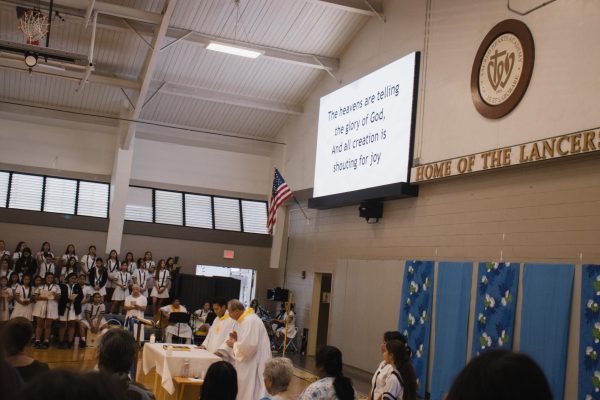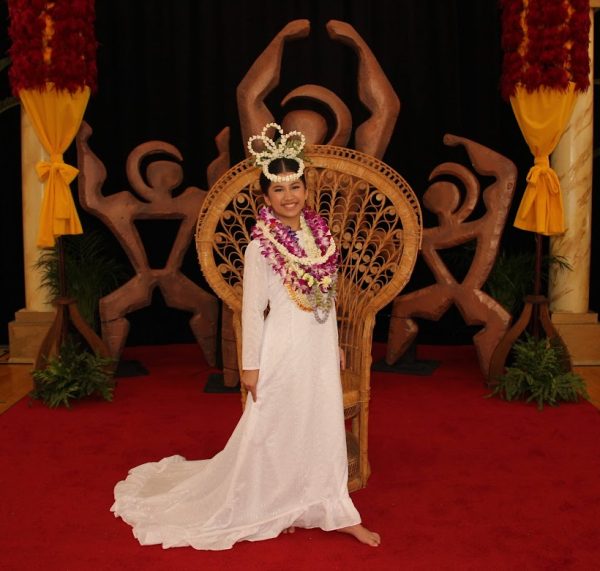Cosplayers bring eccentric fashion to streets
Are you seeing things?
As you walk down the street, a cluster of colors obstructs your view. Suddenly, you realize that the burst of pigments is a group of people wearing costumes — pink wigs, Japanese school uniforms and battle armor.
“They look like they stepped out of a fantasy” is the first thought that comes to mind. After observing the group for a moment, you continue on your way.
What you have just seen are members of an increasingly popular subculture that prides itself on creativity and passion for pop culture.
Welcome to the world of cosplay.
According to cosplayhouse.com, cosplay, short for “costume play,” is a form of performing arts that involves participants, called cosplayers, dressing up as characters from Asian media, such as anime (Japanese animation) and music. Video games and manga are also popular sources of inspiration.

The term “cosplay” was coined by reporter Nobuyuki Takahashi after attending Worldcon in 1984.
The act of cosplaying was modeled after America’s “costuming” which began in the late 1930s by Forrest J. Ackerman, who dressed in a science fiction-themed outfit while attending a convention.
With the release of the manga “Urusei Yatsura” and television series “Mobile Suit Gundam” in Japan, university students began dressing up as their favorite characters.
Over time, the subculture has spread from anime to other platforms of media. Now people also dress up as characters from popular franchises, including “Star Wars” and “Lord of the Rings,” and draw inspiration from fashion styles, such as “gothic lolita” and “kogul,” a look based on high school uniforms.
Another type of cosplaying, “cross-playing,” requires a person to dress as a character of the opposite gender.
Cosplaying has become a popular global trend, sweeping a diverse audience including students at the Academy.
Sophomore Grace Francisco and senior Angelique Mara take pride in being members of the subculture.
“Cosplay is such a unique hobby,” said Francisco. “You are taking a fictional character and bringing them to life.”
“I was intrigued by cosplay when I was in the seventh grade,” Mara said. “I was always impressed by how people were able to make 2-D characters into a real-life look alike!”
Cosplayers can purchase cosplay costumes or create their own. While buying a ready-made cosplay is more convenient, handmade costumes sprout opportunity to test players’ creativity and resourcefulness.
“It also can help develop engineering skills,” Francisco said. “A friend of mine learned to make sound-synced lights from scratch.”
Cosplay, however, can be an expensive hobby. Cosplayers can spend hundreds of dollars buying materials for costumes. Still, the cost should not deter interested cosplayers from creating their own cosplay.
Hawaii hosts an annual anime convention,“Kawaii Kon,” at the Hawaii Convention Center. There, cosplayers have the opportunity to wear their costumes, interact with fellow anime fans and participate in workshops.
Mara showcased her first handmade cosplay at Kawaii Kon 2015.
“I was really nervous about how the other cosplayers would respond to my cosplay, but I was welcomed with compliments and respect from the other convention attendees,” said Mara.
Along with a fun open community, cosplay provides other benefits for participants.
“This hobby has taught me so many new ways of viewing new ideas,” said Francisco.
“I enjoy making friends and connections with people: it’s like a whole different world,” Mara said, “I have even been reunited with childhood friends!”
For first-time cosplayers, Mara and Franciso have some advice.
“Pick a character you like and just go for it,” said Francisco. “Don’t be afraid of stepping out of your comfort zone and have some confidence!”
“Have fun!” said Mara “It’s a cliche, but having fun whether you’re in or out of cosplay is very important for a positive and successful convention!”

Kailanianna Ablog is a current senior at Sacred Hearts Academy and a third-year Journalism student. She is the president of Korean Club, the Outreach Head...


























